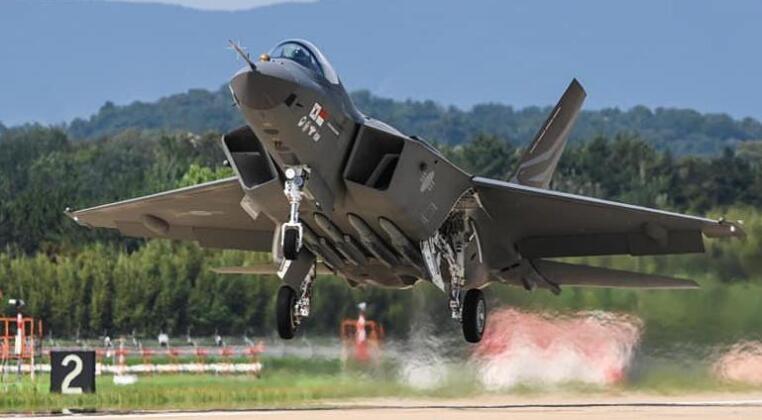News
South Korea’s KF-21 Stealth Fighter Makes First Flight: A Fifth Generation Powerhouse in the Making
On July 19 the Korea Aerospace Industries KF-21 Boramae stealth fighter made its first flight, marking a major milestone for South Korea’s defence sector and making it the first country other than China, Russia or the United States to reach such a landmark. The KF-21 is expected to be the first fifth generation fighter developed outside the three industry leaders, and while current variants carry their weapons externally as fourth generation fighters do, limiting stealth capabilities and preventing them from being considered ‘fifth generation,’ future Block 2 variants will have internal weapons carriage and thus qualify for the fifth generation jets. Internal weapons carriage is key to optimising stealth capabilities and reducing an aircraft’s radar cross section. Even in its current configuration, the KF-21 boasts stealth capabilities well in advance of rivals such as the Russian Su-35, French Rafale or pan-European Eurofighter which are all ‘4+ generation’ designs, and is currently the only fighter in the world to have with the potential to make the transition between the fourth and fifth generations. The KF-21’s engines are one notable shortcoming, with the aircraft relying on the American F404 which, while ensuring low operational costs and maintenance needs and reducing production costs, are considerable less powerful than the complex engines powering rival fifth generation designs.

The KF-21 is expected to enter serial production in 2026, with at least 40 scheduled to be delivered within two years and 120 by 2032. The size of the South Korean Air Force allows it to absorb large numbers of fighters from major programs, and thus makes the KF-21 viable even without export successes. The F-5E/F and F-16C/D, which are the first and second most widely fielded aircraft in the Korean fleet, are expected to both be replaced by the KF-21, while the third generation F-4E Phantoms are being replaced by another fifth generation fighter, the F-35, which is being acquired from the United States. This will make South Korea one of very few countries in the world to field two separate fifth generation fighter classes, with the KF-21 expected to have a superior flight performance, lower maintenance needs and access to more capable armaments than the F-35 although it may be less stealthy.
The KF-21 could potentially transform South Korea into the largest operator of stealth fighters in the world outside China and the United States, with Russia’s rival aircraft being procured in limited numbers while European programs for post fourth generation fighter development lag very far behind. As both China and the United States compete in a league of their own to produce more capable sixth generation fighters, South Korea and Russia appear to be the only powers set to move into the fifth generation using indigenous fighters. The futures of a rival Indian and moreso a rival Turkish program, by contrast, remain highly questionable.












